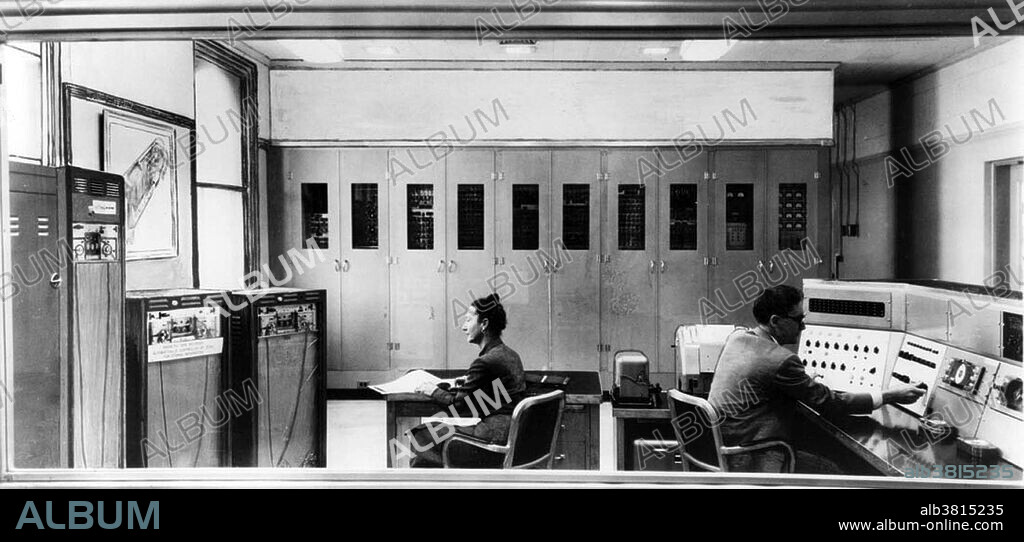alb3815235
Standards Eastern Automatic Computer, 1957

|
Add to another lightbox |
|
Add to another lightbox |



Title:
Standards Eastern Automatic Computer, 1957
Caption:
The first picture to be scanned, stored, and recreated in digital pixels was displayed on the Standards Eastern Automatic Computer (SEAC) at NIST. The advancement of digital imagery continued in the early 1960s, alongside development of the space program and in medical research. Projects at the Jet Propulsion Laboratory, MIT, Bell Labs and the University of Maryland, among others, used digital images to advance satellite imagery, wirephoto standards conversion, medical imaging, videophone technology, character recognition, and photo enhancement. SEAC was a first-generation electronic computer, built in 1950 by the U.S. National Bureau of Standards (NBS) and was initially called the National Bureau of Standards Interim Computer, because it was a small-scale computer designed to be built quickly and put into operation while the NBS waited for more powerful computers to be completed. The team that developed SEAC was organized by Samuel N. Alexander. SEAC was demonstrated in April 1950, and in May 1950 it went into full production, making it the first fully functional stored-program electronic computer in the US. On some occasions SEAC was used by a remote teletype. This makes it one of the first computers to be used remotely. With many modifications, it was used until 1964.
Credit:
Album / NIST/Science Source
Releases:
Model: No - Property: No
Rights questions?
Rights questions?
Image size:
5400 x 2581 px | 39.9 MB
Print size:
45.7 x 21.9 cm | 18.0 x 8.6 in (300 dpi)
Keywords:
1950S • 1957 • 20 XX TWENTIETH CENTURY • 20TH CENTURY • 20TH • AMERICA • AMERICAN • BW • CELEBRITY • COMPUTER OPERATOR • COMPUTER • DIGITAL DATA • DIGITAL IMAGE SCANNER • DIGITAL IMAGERY • ELECTRONIC COMPUTER • FAMOUS • FIRST-GENERATION ELECTRONIC COMPUTER • FUNCTIONAL STORED-PROGRAM • HISTORIC • HISTORICAL • HISTORY • IMPORTANT • MAN • MEN • NATIONAL INSTITUTE OF STANDARDS AND TECHNOLOGY • NIST • NOTABLE • PHOTO • PHOTOGRAPH • RECREATED • RESEARCH • SCANNED • SCIENCE • SEAC • STANDARDS EASTERN AUTOMATIC COMPUTER • STORED • TECHNICIAN • TWENTIETH CENTURY • UNITED STATES • US • USA • WELL-KNOWN • WOMAN
 Pinterest
Pinterest Twitter
Twitter Facebook
Facebook Copy link
Copy link Email
Email

